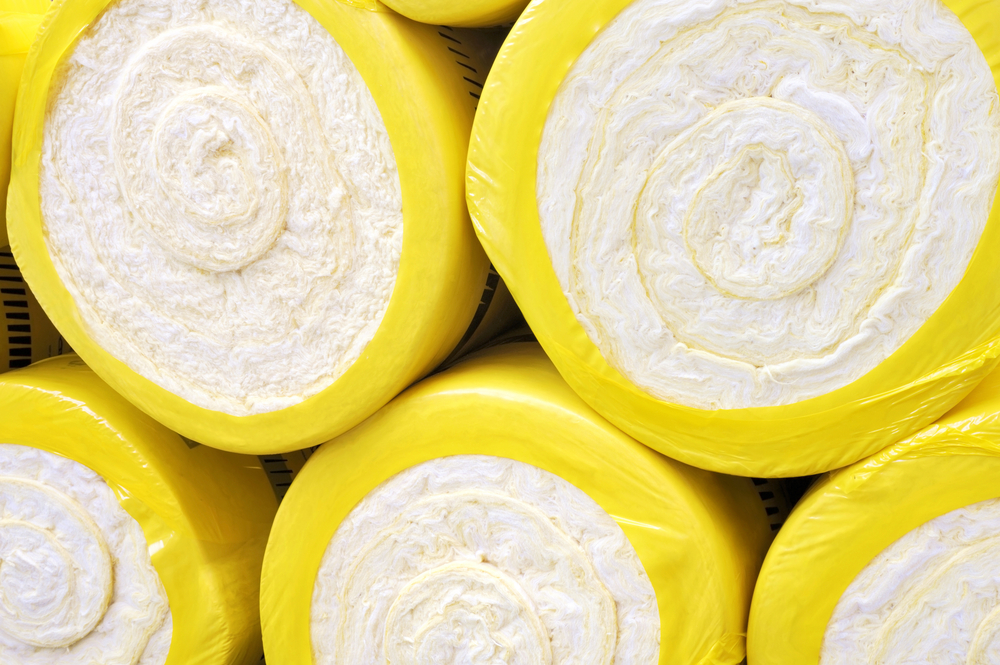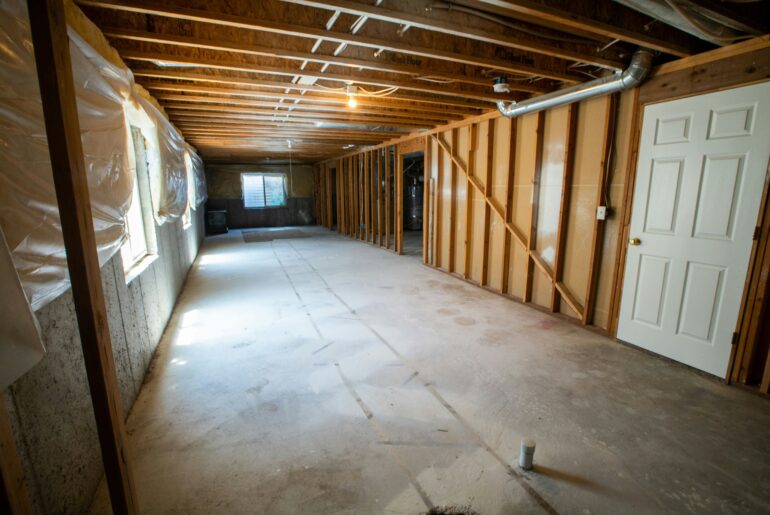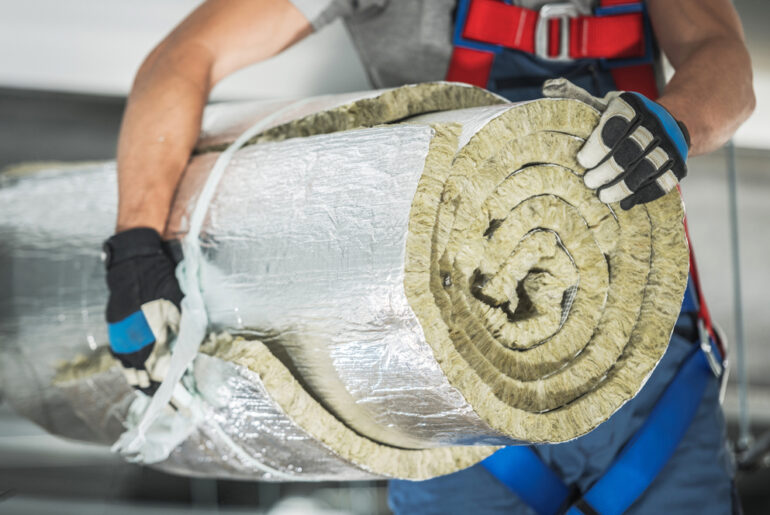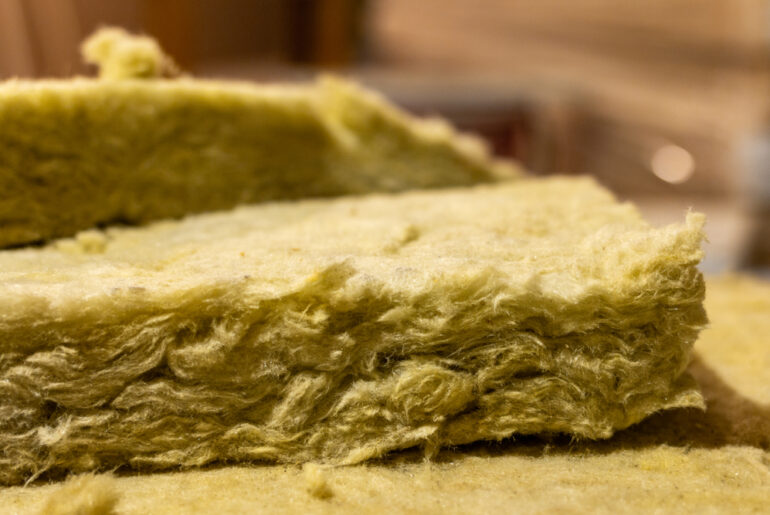When it comes to insulation, R13 insulation is one of the most popular options. Home Depot mentions it excessively in their insulation table, and the same applies to the US Department of Energy.
Most homeowners consider it a standard option for insulating their homes. But is it really the best choice? Usually, yes.
But in some instances, you need a higher R-value, such as R21. A higher R-value ensures better insulation and energy savings. So, in this guide, we’ll compare R13 vs R21 insulation and discuss which one is best for your home.
What Is R13 Insulation?
R13 insulation refers to insulation with an R-value of 13. Its primary job is to keep the warm air inside your home and the cold air outside during winter months. It’s usually made from fiberglass material, which offers excellent thermal protection.
Apart from fiberglass, R13 insulation is also available in other materials:
- Mineral Wool: Mineral wool insulation is made of recycled glass, stone wool, and slag wool. It has excellent fire resistance and acoustic properties. Plus, it saves energy and improves the indoor climate.
- Spray Foam: You can also get R13 insulation in spray foam form. It offers superior air sealing and soundproofing capabilities, making it an excellent choice for modern homes. Spray foam insulation comes in open-cell and closed-cell varieties, each of which has its own pros and cons.
Where Is It Used?
The most common use of R13 insulation is in the attenuation of interior wall cavities. In simple words, this means that it’s used to insulate the walls of your home. Think of it as a large ”blanket,” filling up the ceiling or wall cavity.
According to Home Depot, you can also use R13 insulation in 2×4 walls, irrespective of your climate zone. R13 insulation is also used in crawl spaces in Zones 1 and 2. Plus, you can use it on floors in Zones 1 and 2.
The US Department of Energy recommends using R13 insulation in uninsulated floors (Zones 1 and 2) and uninsulated wood-frame walls in all zones. You may have to supplement R13 insulation with R5 or R10 insulation, depending on where you live.
R13 Insulation Depth
R13 insulation is usually 3.5 inches thick. If you want to measure how much insulation you need, consult your local building codes to find out the minimum depth of insulation for your area. Or, you can discuss the measurements with a contractor.
What Is R21 Insulation?
Compared to R13, R21 insulation is thicker and offers improved insulation performance. It is also available in various materials, including fiberglass, spray foam, mineral wool, and cellulose.
You can find it in faced and unfaced variations. In insulation, ”face” refers to the paper backing attached to the material. Faced insulation has a vapor retarder, which helps prevent warm air from making its way through your home.
Unfaced insulation is used when you don’t need a vapor retarder, such as in new constructions, attics, crawlspaces, basements, and ceilings.
Where Is It Used?
Due to its higher thermal efficiency, R21 insulation has more applications. For example, it can be used in both exterior and interior wall applications. You can also use it on your roof or ceilings.
Similarly, you can install the insulation material in metal framing or wood-framing cavities. It can also be used between furring channels of drywall.
According to the Home Depot chart, you can use R21 insulation in all climate zones for 2×6 walls. The insulation is also sufficient for crawl spaces in Zone 2. Or, you can use it in the ceiling of an attic with ventilation.
R21 Insulation Depth
R21 insulation is 5.5 inches thick, two inches thicker than R13. The extra depth makes the insulation more effective at trapping heat and air. You’ll need this thickness when installing insulation in a 2×6 wall cavity or a furring channel wall.
Which One Should You Choose: R13 or R21?
No, the correct answer is not always R21. Instead, you have to look at these factors.
Required Thickness
How thick should your insulation be? If you need thicker insulation to fill up cavities and furring channels, R21 is the right choice. But if that’s not required, there’s no need to spend a whole lot of extra money. Just opt for R13 instead.
Wall Type
Here comes the 2×4 and 2×6 wall factor. R13 insulation can be used in a 2×4 wall, while R21 insulation is required for a 2×6 wall. If you’re not sure which type of wall you have, measure the actual thickness and then decide on the insulation material accordingly.
Budget
Insulation with a higher R-value is usually more expensive. The same goes for R21 insulation, too.
If you don’t need it or your building code does not specify it, there’s no need to buy the expensive option. Instead, go for R13 insulation.
Is R21 Insulation Better Than R13?
Not always. In most cases, especially if you live in colder climates, R21 insulation is undoubtedly the way to go. It can reduce sound transmission, keep your home warm, lower utility bills, and make your space more comfortable.
However, if you live in Zones 1 or 2, R13 will work fine. Thus, R13 will be the best option. We’re trying to convey that there’s no sure-shot ”better” choice. It all depends on your needs and budget.
When Should You Upgrade From R13 to R21?
Although R21 is not always the right choice, upgrading to it is sometimes inevitable. For example, if you’re renovating an existing home, it’s always a good idea to upgrade from R13 to R21 insulation. It will make your home more energy-efficient going forward.
Or if your utility bills are through the roof and the inspector says it’s due to less insulation than required, you can upgrade to R21 to lower your long-term expenditure.
Similarly, if you’re using R13 insulation in the attic, upgrading to R21 can help improve soundproofing and temperature control. As always, it’s best to consult an insulation expert in your area and get their advice before making a decision.





